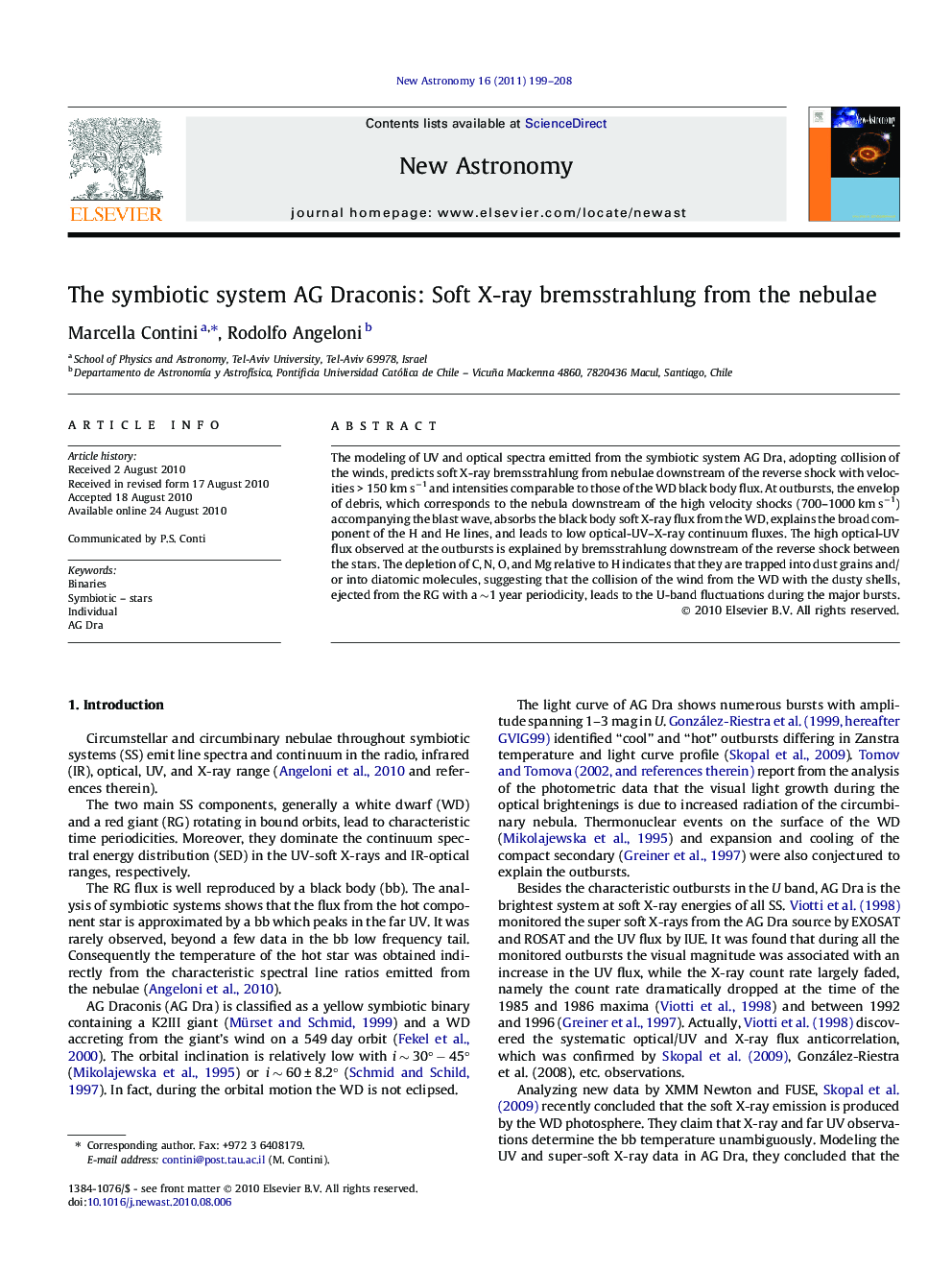| Article ID | Journal | Published Year | Pages | File Type |
|---|---|---|---|---|
| 1779528 | New Astronomy | 2011 | 10 Pages |
The modeling of UV and optical spectra emitted from the symbiotic system AG Dra, adopting collision of the winds, predicts soft X-ray bremsstrahlung from nebulae downstream of the reverse shock with velocities > 150 km s−1 and intensities comparable to those of the WD black body flux. At outbursts, the envelop of debris, which corresponds to the nebula downstream of the high velocity shocks (700–1000 km s−1) accompanying the blast wave, absorbs the black body soft X-ray flux from the WD, explains the broad component of the H and He lines, and leads to low optical-UV–X-ray continuum fluxes. The high optical-UV flux observed at the outbursts is explained by bremsstrahlung downstream of the reverse shock between the stars. The depletion of C, N, O, and Mg relative to H indicates that they are trapped into dust grains and/or into diatomic molecules, suggesting that the collision of the wind from the WD with the dusty shells, ejected from the RG with a ∼1 year periodicity, leads to the U-band fluctuations during the major bursts.
